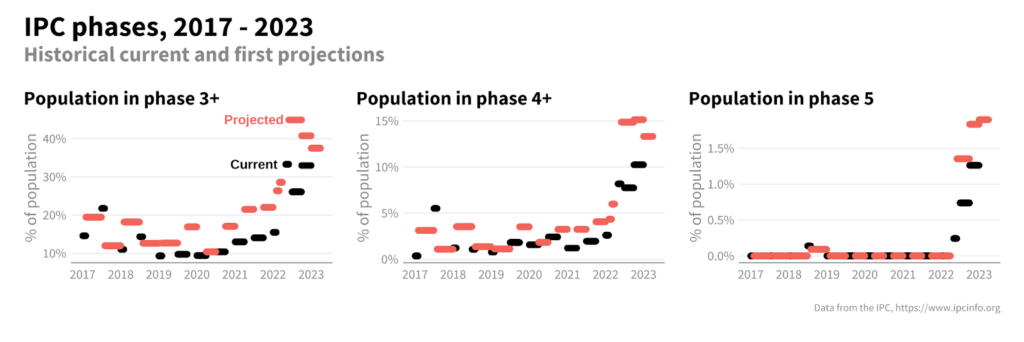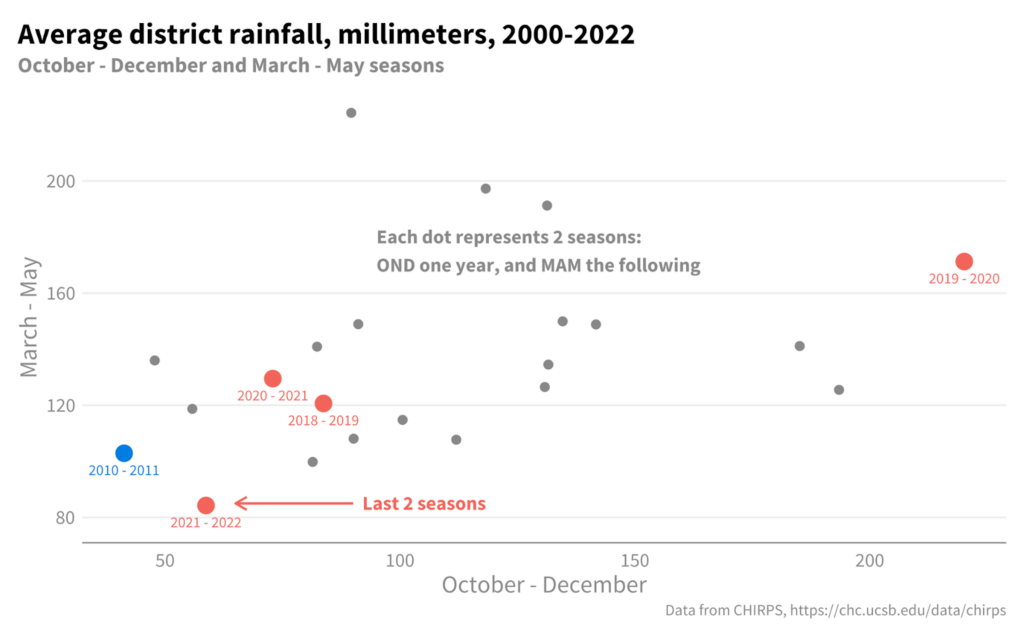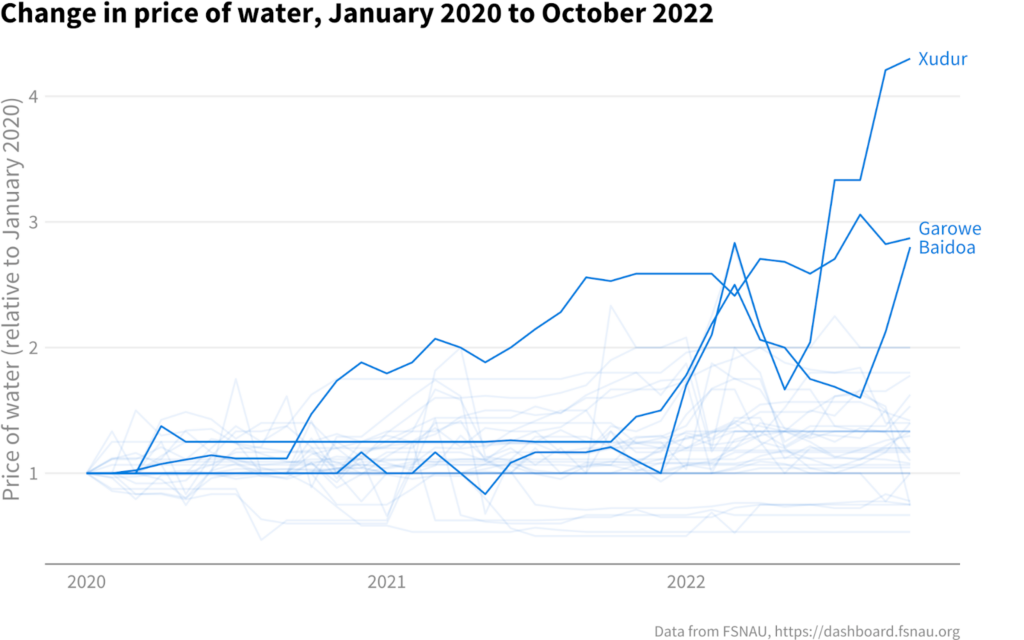Share
The current drought in Somalia is the longest in at least 40 years, driving widespread displacement and food insecurity. The number of people affected by drought has doubled since the start of 2022 to October when it reached 7.8 million people, 46 percent of the country’s population. Working with our colleagues in OCHA Somalia, we have explored available data on the drivers of humanitarian need and compared this to previous years for four indicators: percentage of the population in IPC phases, average rainfall, fatalities due to violence, and change in the price of water.
1. Populations in IPC phases 3, 4, and 5, 2017-2022
The latest Integrated Food Security Phase Classification (IPC) release highlights extreme needs across the country, and found that the risk of famine will increase by mid-2023 if humanitarian assistance is reduced. While the severity of projected conditions have been overestimated in the past (as seen in the difference between the red and black lines below), the IPC projections have been historically accurate at predicting trends. Current levels of acute food insecurity are critically high, and are expected to deteriorate, with populations in phase 3 or above expected to reach over 40 percent of the population by early 2023.

2. Average rainfall, 2000-2022
Multiple, consecutive failed rainy seasons and drought are most often cited by humanitarians as the key driver of the current crisis and famine risk. Looking at the 2021 October-December and 2022 March-May seasons data from CHIRPS, we can see that the past two seasons have been at least as poor as those in 2010-2011. The latest FEWS NET seasonal monitor reports that the 2022 October-December season remains below average, and climate forecast experts are concerned that the March-May 2023 season will also fail, despite some relatively optimistic long-range forecasts.

3. Fatalities due to violence, 2010-2022
A recent paper on predicting acute malnutrition found that some of the most powerful predictors in Somalia include the intensity of armed conflict and the price of water. Conflict from September to November 2022, as measured in total monthly fatalities by ACLED, has been at the highest levels since 2010, averaging around 1,000 fatalities a month.

4. Change in price of water relative to January 2020
According to FSNAU water price monitoring, water prices in Baidoa and Garowe have nearly tripled since 2020, while prices have more than quadrupled in Xudur. Baidoa is the capital of the Bay region in southwestern Somalia, projected by the IPC to face the worst food insecurity in the latest publication. The rise in prices in Xudur and Garowe, located further north in Puntland, shows the geographic scale of the current drought.

Find the data used in these charts and more on the Somalia page on HDX. Track the latest figures and trends for Ethiopia, Kenya and Somalia in the OCHA HDX Horn of Africa Drought Data Explorer. Send any questions or comments to centrehumdata@un.org.